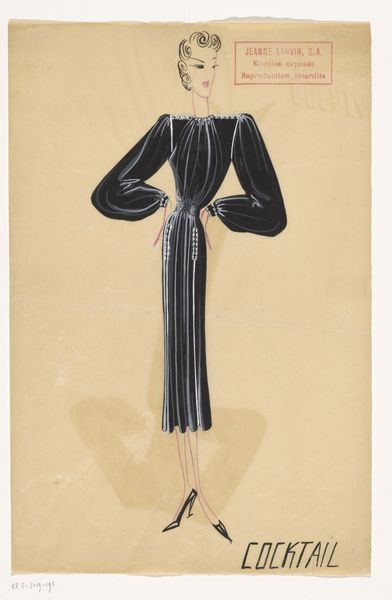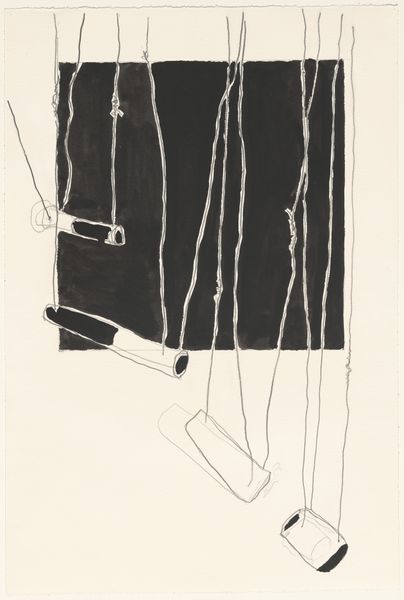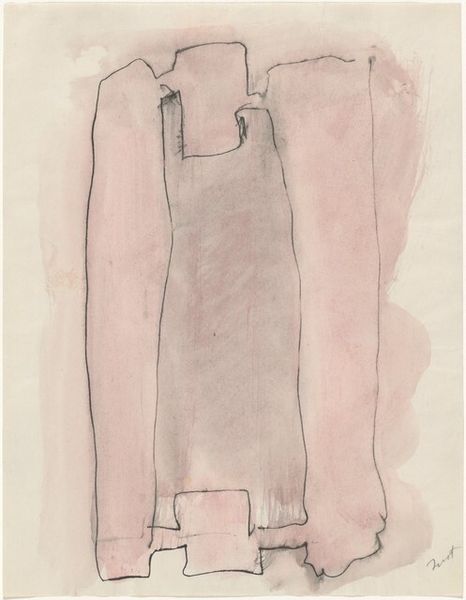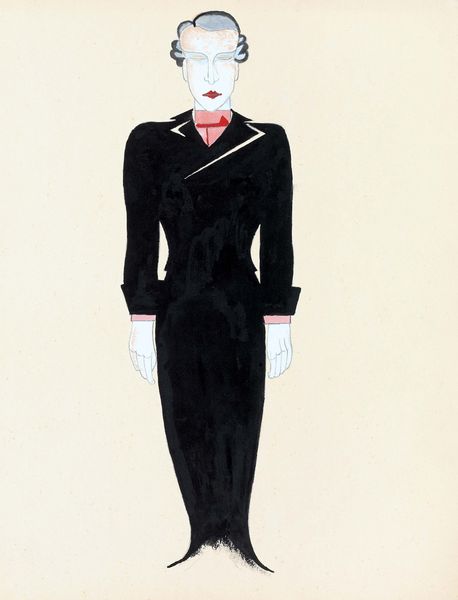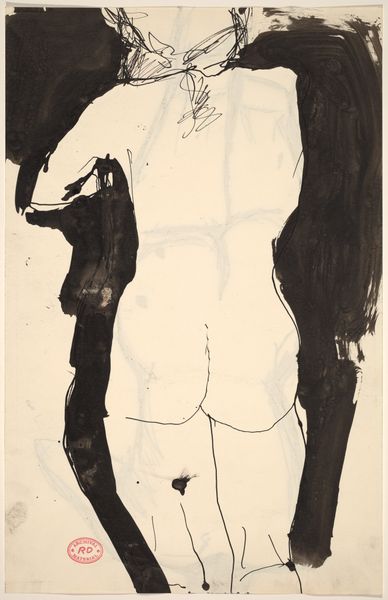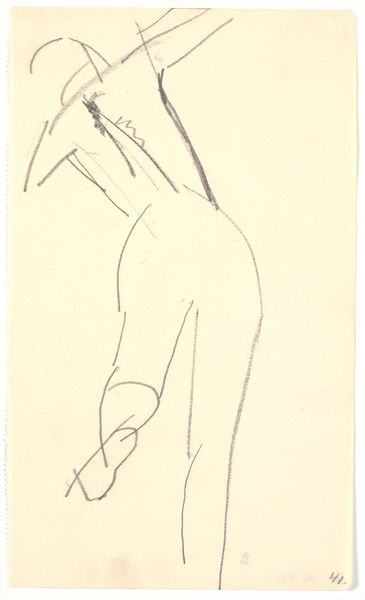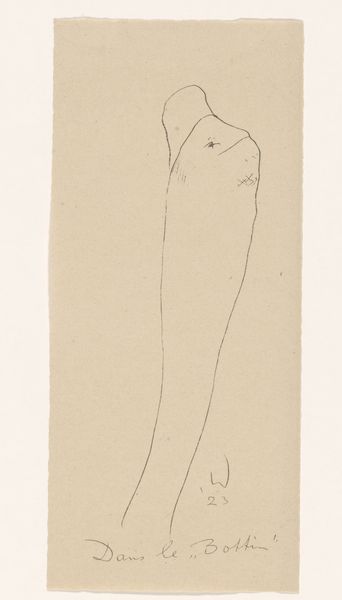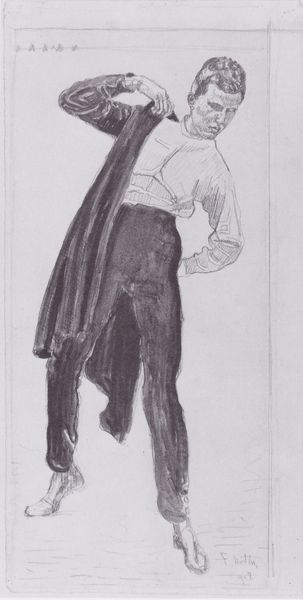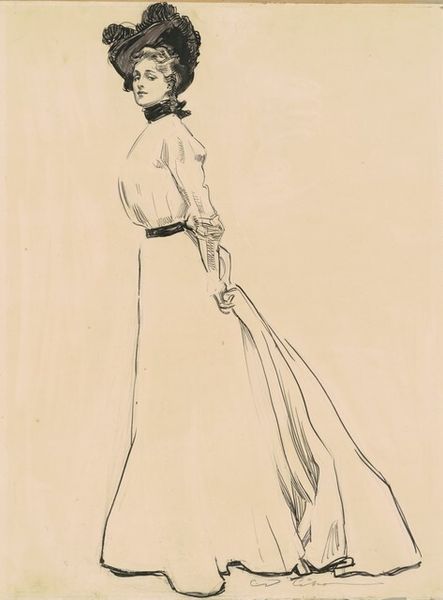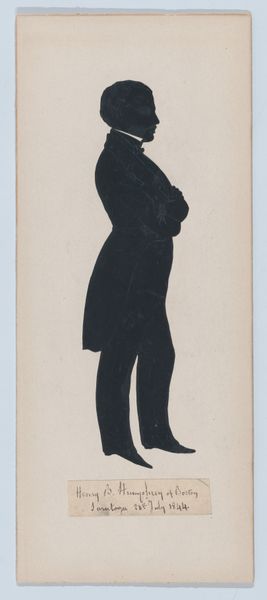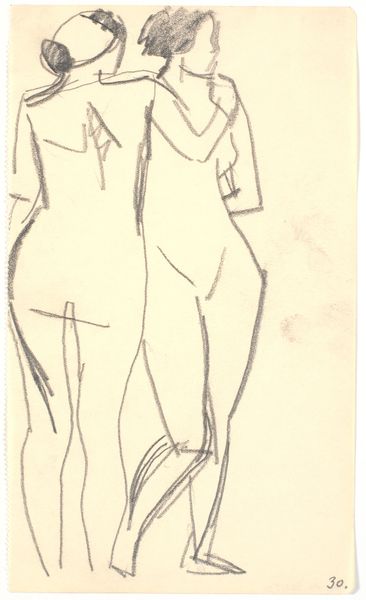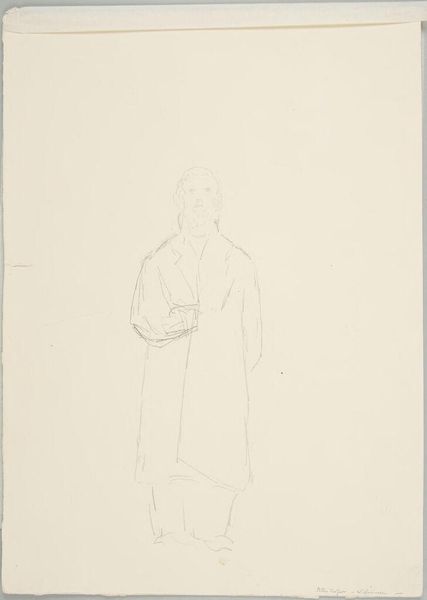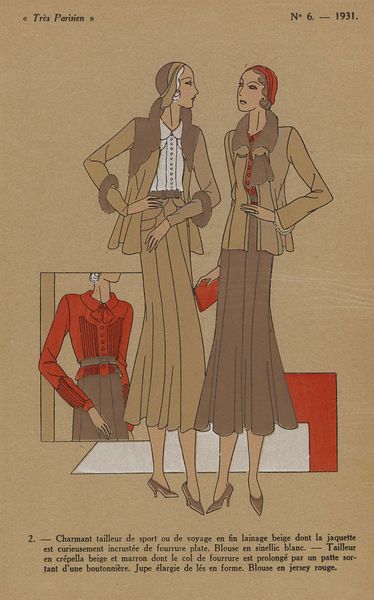
drawing, print, acrylic-paint, pen
#
portrait
#
drawing
# print
#
acrylic-paint
#
pop-art
#
pen
Dimensions: sheet: 45.09 × 30.8 cm (17 3/4 × 12 1/8 in.)
Copyright: National Gallery of Art: CC0 1.0
Curator: Let’s turn our attention to "Basil in Black Leather Suit (Basil at the Theater)," created by Jim Dine in 1968, a work combining drawing, print, and acrylic elements. What strikes you first about this piece? Editor: Immediately, I’m drawn to the stark contrast. The figure in the black leather suit dominates the composition through its bold presence, juxtaposed with the ghost-like outline of another suit. It's quite dramatic. Curator: Indeed. Consider Dine’s broader body of work. He often explored themes of identity and self-representation, and this portrait reflects those interests through the lens of fashion and performance. Black leather during this period carried strong social connotations, signifying rebellion and the avant-garde. Editor: From a formal perspective, the flatness of the black figure is really interesting. It lacks dimensionality, pushing it towards abstraction despite its clear figurative subject. The simple line work denoting the unseen figure to its left is cleverly suggestive as well. It leaves one wondering about presence and absence. Curator: Precisely. The work invites a deconstruction of performative identity. Who is Basil, and what role does the leather suit play in his self-presentation? Was the Theater referenced a safe space for expressing one's individuality? These were turbulent times with youth culture in flux and war protests reaching peak moments. The work speaks to this socio-political dimension. Editor: I agree. The use of varied techniques enhances its impact. The flat acrylic contrasts sharply with the sketch-like quality of the outlined suit. I'd add the lack of facial detail, or, for that matter, any inner detail whatsoever, only reinforces the objectification of Basil's persona and creates tension within the frame. Curator: Ultimately, “Basil in Black Leather Suit” exists at the nexus of art history and critical theory. Dine offers us a window into the cultural moment, but he simultaneously challenges us to reflect on how societal constructs dictate our identities. Editor: For me, it shows the way Dine successfully layers form and void. It opens a pathway to the imagination which in turn offers us a richer experience in the analysis of this image.
Comments
No comments
Be the first to comment and join the conversation on the ultimate creative platform.
